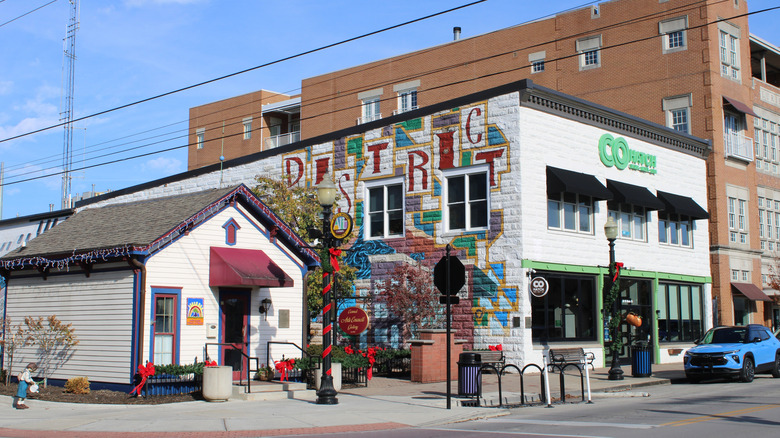The Wildly Unexpected US State Where Your Social Security Dollar Goes Furthest In Retirement
Choosing a place to live when you're retired is a big decision. Are you prioritizing staying near your existing community, or are you choosing somewhere new — maybe even moving abroad and becoming an American expat? If you'd like to stretch your social security dollars further, you might consider moving to a state with a low cost of living. An AARP study analyzed information from the Social Security Administration and the University of Massachusetts' Elder Index to find the 10 U.S. states where Social Security goes furthest. The number one spot? Indiana.
You might find this surprising because Indiana does not have the lowest cost of living in the United States (that honor goes to Arkansas, according to U.S. News). However, the numbers work out: Indiana's average retirement benefit payment is $2,034 per month, and the state's average monthly basic expenses are $2,238. Do a little math, and you'll find that on average, for Indiana retirees, over 90% of monthly basic expenses are covered by Social Security benefits.
The study further broke down the data into three housing categories: renters, homeowners with a mortgage, and homeowners without a mortgage. Indiana ranked No. 1 for both renters and homeowners with mortgages, and No. 4 for homeowners without mortgages (following Delaware, Arizona, and South Carolina).
What to consider before retiring in Indiana
If you're considering retiring in Indiana, there are a number of factors to weigh. First of all: Where in Indiana? Do you want to live in a city like Indianapolis, where you'll find many of the state's most famous art, shops, and restaurants? Maybe you'd prefer an artsy suburb like Carmel (pictured above). Or is a small town with welcoming locals like Alexandria more your scene?
The retirement resource Retirement Design Lab suggests that retirees debating moving to Indiana look at all the financial factors — not just social security payments, tax benefits, and cost of living, but also the relatively high sales tax (7%) and the periodic property tax assessments, which can lead to fluctuating taxes. In terms of lifestyle, the harsh winter weather (particularly in the northern part of the state) and the limited access to public transportation are also important factors to consider.
Jan Mutchler, former director of the University of Massachusetts, Boston's Gerontology Institute, told AARP that the study is best used as a jumping-off point, suggesting "using that information as a launching point, and perhaps as a call to action, to look at your own expenses and your own resources — to dig in deeper, to understand what your situation is likely to look like, and begin to think about some strategies for closing the gap."

